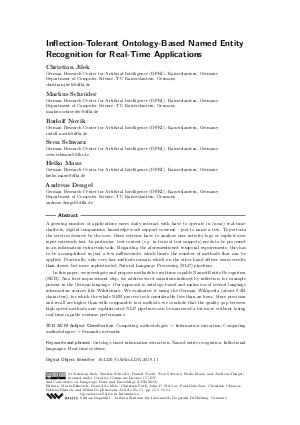OASIcs.LDK.2019.11.pdf
- Filesize: 1.42 MB
- 14 pages

 Creative Commons Attribution 3.0 Unported license
Creative Commons Attribution 3.0 Unported license


















Feedback for Dagstuhl Publishing